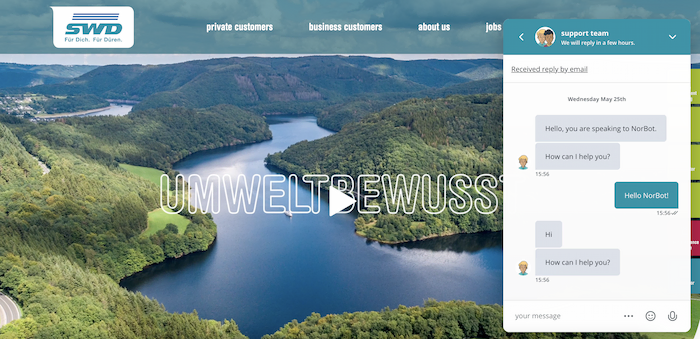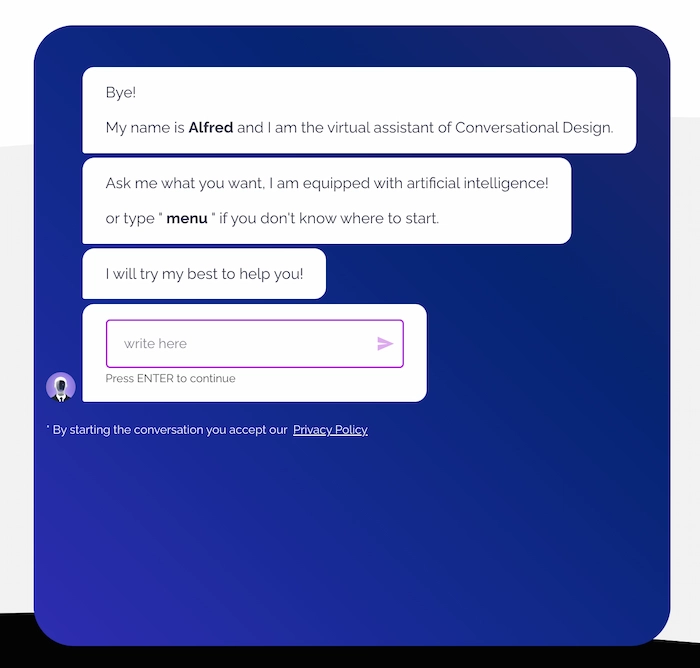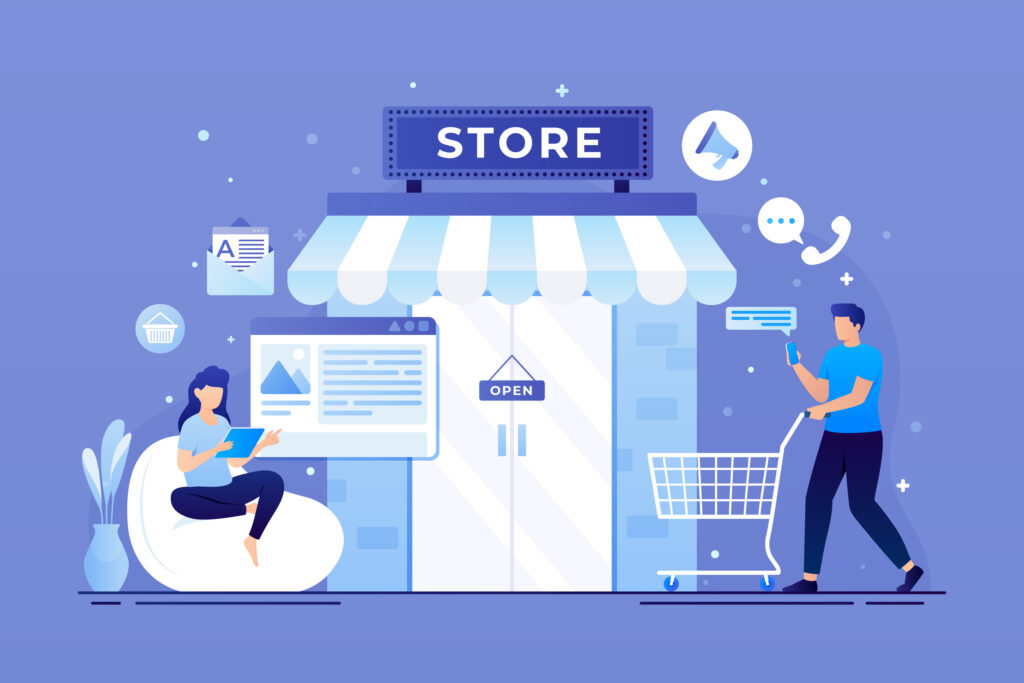
In today’s competitive business landscape, small businesses with limited resources constantly seek valuable insights and innovative solutions to enhance customer experience, streamline operations, and drive growth. Chatbots, virtual assistants powered by artificial intelligence (AI), are rapidly emerging as valuable tools for achieving these goals.
This article explores the multifaceted benefits of chatbots for small businesses, delving into how they can revolutionize customer service, lead generation, and sales efforts. We’ll also shed light on the key features that contribute to an effective chatbot and explore the exciting possibilities that AI advancements hold for the future of chatbots in the small business domain.
Table of Contents
Key Takeaways
- Implement chatbots: Utilize chatbots to enhance customer engagement, boost sales, and generate leads effectively.
- Incorporate key features: Integrate features like instant responses, personalized recommendations, and seamless navigation to maximize AI chatbot benefits for customer engagement.
- Learn from success stories: Draw inspiration from real-life examples of businesses achieving growth and improved customer satisfaction through chatbot implementation.
- Overcome challenges: Address common obstacles such as user trust issues or technical limitations by adapting strategies and refining the chatbot experience.
- Prepare for the future: Stay ahead by understanding the evolving landscape of small business chatbots and exploring innovative ways to leverage this technology for business growth.
- Drive growth: Harness the power of chatbots to propel your small business forward, fostering customer relationships and increasing operational efficiency.
The Value of Chatbots
Enhanced Customer Service
Chatbots can implement personalized responses tailored to each customer’s needs and preferences. They offer 24/7 customer support, ensuring assistance is available at any time. Chatbots provide instant answers to common queries, enhancing the overall customer experience.
By leveraging chatbots, businesses can streamline customer interactions by swiftly addressing inquiries and issues. Chatbots also help in automating repetitive tasks for business, freeing up human resources for more complex responsibilities. Moreover, they significantly reduce response time for inquiries, leading to improved efficiency in handling customer requests.
Stadtwerke Düren, an energy service provider, implemented a chatbot named NorBot to address these challenges. NorBot successfully resolves over half of customer inquiries and offers immediate support across their website, WhatsApp, and Facebook Messenger. By utilizing a knowledge base maintained by human agents, NorBot ensures accurate information delivery, significantly reducing the workload on live agents.

Lead Generation and Qualification
Chatbots excel at capturing leads by utilizing engaging interactions to gather information and preferences, guiding users towards relevant products or services.
This is evident in the success story of Conversational Design, an Italian conversational marketing agency, which increased lead conversion rates by 40% by using chatbots instead of web forms. This led to 20k leads in a year, reduced project completion time, and lowered the cost per lead by 200%. Their chatbots not only captured leads but also qualified them through targeted questions to understand user needs and purchase readiness.

Chatbots can further nurture these qualified leads by providing valuable content, personalized recommendations, and timely follow-ups. This approach helps build relationships with potential customers and convert them into paying customers efficiently.
Increased Sales and Conversions
Chatbots can significantly boost sales and conversions through various methods. They can personalize product recommendations based on user data, offering targeted suggestions that resonate with individual needs.
Additionally, chatbots can provide real-time support during the buying journey, addressing customer concerns and offering promotions or discounts to incentivize purchases. They can also automate abandoned cart recovery by reminding customers about unfinished purchases and prompting them to complete the checkout process.
A prime example of this is Sephora’s WhatsApp chatbot in Southeast Asia. By offering personalized consultations, reservation options, and addressing product inquiries, the chatbot not only improved customer experience but also generated 30k in monthly revenue. This demonstrates the effectiveness of chatbots in driving sales and conversions.
Key Features for Effective Chatbots
Natural Language Processing (NLP)
Effective chatbots leverage NLP to understand the intent behind user queries, analyze context and sentiment, and respond accurately, enabling natural conversations and reducing reliance on scripted responses.
Effective chatbots leverage NLP to go beyond simple keyword matching. They analyze the context and sentiment of user queries to grasp the underlying meaning and respond appropriately. This allows them to handle complex questions, even when phrased differently, and provide accurate information.
NLP enables chatbots to engage in more natural conversations. They can understand nuances like sarcasm, slang, and incomplete sentences, making interactions feel more human-like and engaging for users.
Bradesco’s chatbot demonstrates the effectiveness of Natural Language Processing (NLP). Trained on a massive dataset of customer inquiries, their chatbot achieved a 96% accuracy rate in understanding questions. This highlights how NLP empowers chatbots to handle complex queries efficiently, reducing wait times and improving the overall customer experience.

Multilingual Support
Chatbots with multilingual capabilities can cater to a broader customer base, expanding their reach beyond geographical limitations. This is crucial for businesses operating in international markets or targeting diverse audiences.
By offering support in the user’s preferred language, chatbots can overcome language barriers and ensure a smooth customer experience. This fosters trust and builds stronger relationships with customers.
For instance, a travel company’s chatbot can offer support in English, Spanish, and French, allowing them to effectively communicate with customers from various countries.
Seamless Integration
Customers expect consistent interaction across different platforms. Effective chatbots integrate seamlessly with various channels like websites, social media messengers (Facebook Messenger, WhatsApp), and mobile apps. This provides a unified experience for users, allowing them to interact with the chatbot wherever they are most comfortable.
Seamless integration enables chatbots to share data and maintain context across different platforms. This ensures users don’t have to repeat information and allows the chatbot to provide personalized responses throughout the interaction.
So, a customer might initiate a conversation with a chatbot on a brand’s website and then switch to interacting via Facebook Messenger. The chatbot should be able to access the previous conversation history and maintain continuity, offering a personalized experience regardless of the platform used.
Machine Learning
Machine learning algorithms allow chatbots to learn and adapt over time. By analyzing past interactions and user data, the chatbot can refine its understanding of natural language, identify patterns in user behavior, and improve its response accuracy. It empowers chatbots to anticipate user needs and proactively offer suggestions or support.
Telenor’s chatbot, Telmi, exemplifies the power of machine learning. By leveraging deep learning algorithms, Telmi achieved an advanced conversational level, contributing to a 15% increase in revenue within a year. This highlights how machine learning can empower chatbots to continuously improve and deliver significant business value.

Personalization
Personalization features enable chatbots to cater to individual user preferences and needs. This can involve:
- Remembering user information (name, purchase history)
- Offering product recommendations based on past behavior
- Highlighting relevant promotions and discounts
Personalization fosters a sense of connection with the brand, leading to increased customer satisfaction and loyalty. For instance, a travel chatbot can personalize recommendations based on a user’s travel preferences (e.g., recommending beaches for someone who enjoys relaxation or suggesting historical landmarks for someone interested in culture).
Overcoming Challenges
Limited Scope
Chatbots may struggle with complex inquiries requiring human judgment, empathy, or nuanced understanding. For instance, a customer with a unique product issue might find a chatbot frustrating if it cannot provide a personalized solution.
Hence, businesses should focus on defined tasks by outlining cleary the specific functionalities the chatbot will handle. This could include answering frequently asked questions, providing basic customer support, or offering product recommendations. It’s crucial to integrate the chatbot with a human support system for complex issues that require an agent’s expertise and emotional intelligence. Additionally, offering clear instructions and a seamless way to escalate to a live representative whenever necessary ensures a smooth customer experience.
Data Security
As chatbots interact with personal information, robust security measures are crucial. This includes data encryption, secure communication protocols, and transparent data privacy policies. Businesses must gain user trust by being upfront about how user data is collected, stored, and utilized builds trust with customers.

Cost
Developing a sophisticated chatbot with extensive capabilities can be expensive. Thankfully, various platforms offer affordable options with pre-built features. This allows small businesses to get started without breaking the bank.
Consider starting with a basic chatbot that addresses core tasks and gradually scale up its features as needed. This phased approach makes chatbot implementation more manageable from a budgetary standpoint.
User Adoption
Customers might hesitate to interact with a chatbot, especially if they perceive it as impersonal or lacking the ability to address their concerns. To address this, businesses should clearly communicate the chatbot’s purpose and benefits. The chatbot itself should deliver accurate and helpful information in a user-friendly manner. This can involve using natural language and avoiding technical jargon.
Actively seek user feedback through surveys, polls, or direct interactions. This allows you to identify areas for improvement and refine the chatbot’s performance over time. By addressing user concerns and continually enhancing the chatbot’s capabilities, you can foster a positive user experience and encourage greater adoption.
Future of Small Business Chatbots
The future of chatbots for small businesses is brimming with exciting possibilities driven by advancements in Artificial Intelligence (AI). Here’s a glimpse into how chatbots will evolve and become even more valuable tools:
AI-Powered Personalization
Current chatbots can personalize interactions to a certain extent, but AI promises a significant leap forward. Imagine a chatbot that remembers a customer’s past purchases, browsing history, and preferences. This allows the chatbot to provide hyper-personalized recommendations, targeted promotions, and tailored support, fostering a deeper connection with the customer and enhancing the shopping experience.
For instance, a clothing store’s chatbot might suggest complementary items based on a customer’s previous purchases or recommend new arrivals that align with their style preferences.

Sentiment Analysis
AI-powered sentiment analysis empowers chatbots to go beyond simply understanding the literal meaning of words. They can analyze the tone and sentiment behind a customer’s message, detecting frustration, satisfaction, or confusion. This enables the chatbot to adjust its communication style accordingly.
Imagine a customer expressing frustration about a delayed order. The chatbot, equipped with sentiment analysis, can offer empathetic responses, apologize for the inconvenience, and provide updates or solutions to address the customer’s concerns.
Proactive Customer Engagement
Imagine a future where chatbots don’t just react to customer inquiries, but anticipate their needs. By analyzing user data and past interactions, AI-powered chatbots can proactively reach out to customers with relevant information or special offers. This could involve reminding them about abandoned carts, suggesting complementary products based on their purchase history, or providing updates on the status of their orders.
These AI advancements will transform chatbots from basic customer service tools into powerful assistants that can personalize interactions, understand customer sentiment, and even proactively engage with them, ultimately leading to a more frictionless and satisfying customer experience.
Omnichannel Accessibility: A Seamless Journey Across Platforms
In today’s digital world, customers expect a consistent experience across different channels. This is where omnichannel accessibility comes into play.
Consider a customer initiating a conversation with a chatbot on a brand’s website. Later, they might switch to interacting via the brand’s mobile app. An ideal scenario would ensure the chatbot maintains context and remembers the conversation history, regardless of the platform used. This allows for a smooth and uninterrupted experience, fostering customer satisfaction.
By prioritizing omnichannel integration, chatbots can become the central hub for customer interactions, providing a unified experience whether a customer reaches out through a website, social media platform, or mobile app. This not only streamlines communication for customers but also empowers businesses to gather valuable data and gain a holistic view of their customer interactions.
By harnessing the potential of chatbots, small businesses can enhance customer service, build stronger relationships, and ultimately achieve sustainable growth.

Final Remarks
By embracing chatbot technology and strategically incorporating it into their operations, small businesses can unlock a plethora of advantages. From providing 24/7 customer support and automating repetitive tasks to personalizing the customer journey and fostering stronger brand loyalty, chatbots offer a compelling solution for businesses seeking to thrive in the digital age. As AI continues to evolve, chatbots will become even more sophisticated, equipped with advanced capabilities like sentiment analysis and proactive customer engagement, further transforming the way small businesses interact with their customers.
Related Article:
The following article may contain the author’s opinions and interpretations of the subject matter. Any of the products, services, or platforms mentioned is not sponsored or affiliated.
Featured Image courtesy of freepik
